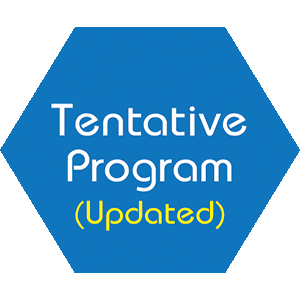
Ling-Qun Hu
Executive director of No Pain Labor & Delivery - Global Health Initiative , USA
Title: Impact of Neuraxial Labor Analgesia on Neonatal Outcomes
Biography
Biography: Ling-Qun Hu
Abstract
An education program, No Pain Labor & Delivery - Global Health Initiative (NPLD-GHI), was implemented at the Second Hospital of Wenzhou Medical College, China in 2010 to increase practice of neuraxial labor analgesia (NA). A two-phase impact study was conducted to assess the impact of increased NA on neonatal outcome.
In Phase I study, NA was utilized in the first stage of labor. Data was collected during three time periods: baseline (01/2009-06/2009, NA=0%), phase-in (07/2009-05/2010), and post-NPLD-GHI (06/2010-06/2011, NA~50%). In Phase II study, NA was used in both first and second stages of labor, and 2014 ACOG definition for arrest of labor was used. This phase collected data from 03/2014-05/2015. The initial 3 months of this period were considered baseline. The primary outcome was NICU admission rate, which was compared between pre- and post-interventions, for each study phase. Statistical significance was defined at p < 0.05.
The NA rate increased from 0% to ~50% of 15,415 deliveries after NPLD-GHI intervention (Table 1, Figure 1) in Phase I study. Our measured variables showed no significant changes. In Phase II study, improved rates of NICU admission, 7-day mortality, Apgar 0-3, antibiotics usage, and intubation from 10,414 deliveries were observed (Table 1, Figure 2) with better maternal outcomes.
Our data indicate the improvement of neonatal outcomes with implementation of combined NA throughout two stages of labor and the 2014 ACOG definition for arrest of labor.
Table 1. Impact of Neuraxial Labor Analgesia on Neonatal Outcome
|
Phase I Study |
Baseline (%) |
Post-NPLD-GHI(%) |
P-values |
RR |
95% CI |
|
Time |
01/2009-06/2009 |
06/2010-06/2011 |
|
|
|
|
Total delivery |
2728 |
7462 |
|
|
|
|
NICU admission |
223 (8.2) |
612 (8.2) |
0.967 |
1.00 |
0.86, 1.16 |
|
Neonatal 7-day mortality |
3 (1.1) |
15 (2.0) |
0.333 |
1.83 |
0.52, 6.30 |
|
Apgar 0-3 at 5 minutes |
45 (1.6) |
109 (1.5) |
0.495 |
0.89 |
0.62,1.24 |
|
Cesarean delivery |
1240 (46) |
3112 (42) |
0.033 |
0.40 |
0.33, 0.47 |
|
Neuraxial labor analgesia |
0 (0) |
2538 (47*) |
<0.001 |
1857 |
116, 29680 |
|
Phase II Study |
Pre- combined interventions (%) |
Post-combined interventions (%) |
P-values |
RR |
95% CI |
|
Time |
03/2014-05/2014 |
06/2014-05/2015 |
|
|
|
|
Total delivery |
1870 |
8544 |
|
|
|
|
NICU admission |
264 (14) |
491 (5.7) |
<0.001 |
0.41 |
0.35, 0.46 |
|
Neonatal 7-day mortality |
12 (0.6) |
14 (0.2) |
<0.001 |
0.26 |
0.11, 0.55 |
|
Apgar 0-3 at 5 minutes |
13 (0.7) |
29 (0.3) |
0.029 |
0.49 |
0.25, 0.93 |
|
Neonatal intubation |
41 (2.2) |
92 (1.1) |
<0.001 |
0.49 |
0.34, 0.70 |
|
Neonatal antibiotics usage |
136 (7.3) |
285 (3.3) |
<0.001 |
0.46 |
0.37, 0.55 |
|
Cesarean delivery |
750 (40) |
3067 (36) |
0.021 |
0.90 |
0.84, 0.95 |
|
Neuraxial labor analgesia |
519 (44) |
3330 (57*) |
<0.001 |
1.29 |
1.19, 1.39 |
|
*Neuraxial labor analgesia rate = parturients with neuraxial labor analgesia / parturients with vaginal delivery or intrapartum cesarean delivery |
|||||

